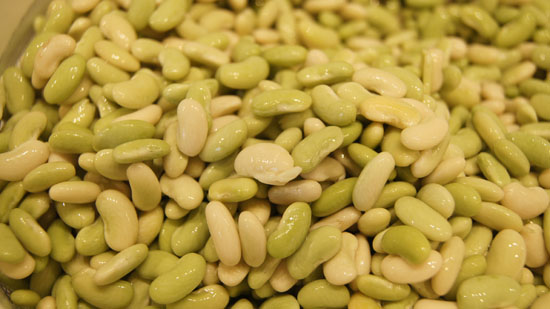I know better. But when I visit my favorite Asian market in Boulder I usually end up walking out with a few odd and unplanned items tucked in the plastic bag. I call it a “what the heck?” moment. Here we go:
 It cost all of 2 dollars for this large container of pickled daikon and carrots! How could I resist?
It cost all of 2 dollars for this large container of pickled daikon and carrots! How could I resist?
In my defense (this time), I once was searching high and low for pickled daikon. That was several years ago when I took a home cook class from the Culinary School of the Rockies (now Escoffier Boulder) on Thai cooking. We were given a great recipe for Pad Thai that called for this unusual ingredient (among a lot of other things). I found fresh daikon in stores, but not pickled. So when I saw the container of pickled daikon (and carrots) next to the check-out stand, I couldn’t resist it. Even though long ago I had stopped searching for it. Even though I had no plans to make Pad Thai in the near future.
It does look pretty:

That’s a little Thai basil next to the pickled daikon and carrots. It too is a deal, it only cost about $2.50 for a huge bag, about 4 ounces. That’s what local regular markets charge for 2/3 ounce of fresh herbs.
What is daikon? It’s a large Asian radish. What is Thai basil? Thai basil is similar to sweet basil, but it has a strong kick of a licorice-flavor aroma, sort of like fresh fennel leaves. It’s great in Asian cooking. For instance: I did a quick fry of chicken tenders, added red curry paste and coconut milk, and topped it off with some chopped Thai basil and lime. Perfect.
The Asian market that I like is called the “Asian Seafood Market”. It’s in Boulder, Colorado, on 28th Street, just north of Valmont. The lady who runs the store is always watching TV, often Korean soap operas. She always berates me about something. This time I had two limes in my basket. She said “Two limes? No two limes. Go get ‘nother. They are three limes, three limes for dollah.” I dutifully went for another. If I buy one or two baby bok choy, she just shakes her head, “not ‘nuf, you need lot.” If I ask where something is, or how to substitute for something I can’t find, she talks so fast and barely understandably that I just nod and do what she says.
The market is amazing. Packed with all sorts of cans and jars that look strange to American eyes. Usual and unusual frozen seafoods. All sorts of wrappers and noodles and rices. The produce section looks small, but is full of good herbs and vegetables. The fresh mint is excellent. I learned about Asian mangoes from the store-boss; I found them in her store years before I started seeing them in other local markets. (They call them “champagne” mangoes and I’d eat them today but I’m allergic.) She sells fresh bean sprouts by the pound, which is great, since I rarely use all of a package bought in a regular market. Near the counter is a display of Asian packaged snacks. Oh, and my masseuse swears by the eucalyptus oil that is behind the counter. (It clears the nasal passages.)
Go there, check it out, if you live in the Boulder area. It’s an adventure. Where else can you find non-bar-coded foodstuffs? That in itself is a trip back a couple decades. I checked, but wasn’t surprised that the store does not even have a web site. You can only experience this store in person.
And what did I do with the pickled daikon and carrots? Well, I cooked a couple tablespoons of chopped red onion, then added chopped baby bok choy, then salt and pepper. Then I topped it with a heaping tablespoon of the pickled mixture. Served it next to the above mentioned Thai chicken dish and rice. It was very good. It’s all gone, not even a photo to share with you.
 I found an (expensive) bag of heirloom flageolet beans at a little store called “Cured“. Aren’t they pretty? Some of them are creamy tan, and some pale green.
I found an (expensive) bag of heirloom flageolet beans at a little store called “Cured“. Aren’t they pretty? Some of them are creamy tan, and some pale green.




